#Blenniiformes
Explore tagged Tumblr posts
Note
Thank you for such a beautifully curated blog!
Aww thank you, here is a special friend for you...

Tail Spot Blenny (Ecsenius stigmatura), family Bleniidae, order Bleniiformes, Raja Ampat, Indonesia
photograph by Kiyoshi Okada

Raja Ampat, photograph by Rickard Zerpe

Grows up to a length of up to 6 in. Found in the Western Pacific
photograph by Petesaquariums
968 notes
·
View notes
Text

Tompot blenny
“Parablennius gattorugine” - via Wikimedia Commons
#Parablennius gattorugine#tompot blenny#blenny#fish#nature#animals#wikipedia#wikipedia pictures#wikimedia commons#oceancore#ocean aesthetic#ocean animals#marine biology#marine animals#marine biodiversity#bony fish#Combtooth blenny#eukaryotes#chordates#chordata#Actinopterygii#actinopterygians#Blenniiformes#marine life#marine creatures#fishblr#icthyology#animal kingdom#sea creatures#ocean
88 notes
·
View notes
Text

A cinnamon clownfish (Amphiprion melanopus) hides out in a bleached anenome off the coast of One Tree Island, Australia
by John Turnbull
#cinnamon clownfish#clownfish#bony fish#fish#amphiprion melanopus#amphiprion#Pomacentridae#Blenniiformes#actinopterygii#chordata#wildlife: australia#wildlife: oceania
74 notes
·
View notes
Text
Taxonomy Tournament: Fish
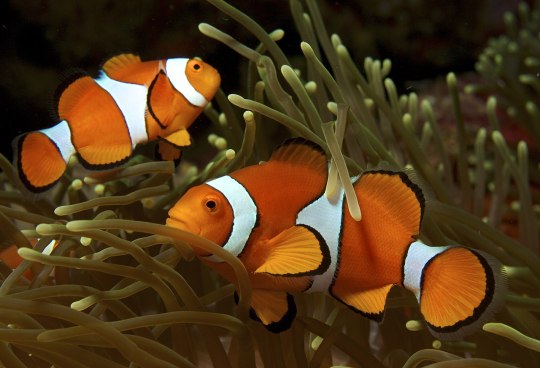
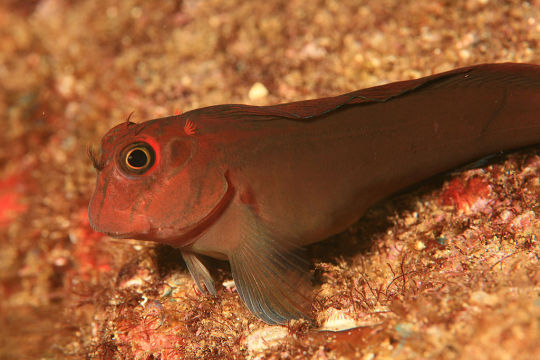
Pomacentridae. This family is made up of clownfishes and damselfishes. Some damselfish have been observed to have domesticated mysid shrimp.
Blenniiformes. This order is made up of blennies, including the sand stargazer, which have eyes on top of their heads and spend most of the time buried in sand to ambush prey.
#animals#biology#polls#poll tournament#zoology#clownfish#fish#blennies#Pomacentridae#Blenniiformes#0x23v0x5c
77 notes
·
View notes
Text

Blackflap Blenny
#blackflap blenny#blenny#Cirripectes auritus#fish#Actinopterygii#Blenniiformes#Blenniidae#Cirripectes#upl
12 notes
·
View notes
Text
Fish Yap Post 2 - Damselfishes (Pomacentridae)!
The Pomacentridae (damselfishes) are a family that (besides a certain genus, which we will discuss later) many a fishkeeper loathes and many a diver is uninterested in, but truly are a fascinating family of fish that I believe should be much more appreciated than they often are.
Introduction The damselfishes are a family of generally small and colourful fishes, typically inhabiting shallow tropical reefs (although, several species do occur in temperate latitudes, and at greater depths). Most are strictly marine - however, a small handful of species inhabit brackish areas, and occasionally even freshwater habitats. Their small size, hardy nature and bold colours should make them extremely popular aquarium fish, but their popularity is hampered by a single trait - the high aggression of most species. There are over 400 described species of damselfishes, but most people could name only a few - however, those of the genus Amphiprion are extremely well known - these are the anemonefishes, also known as clownfishes.
The name Pomacentridae is derived from the Greek words poma and kentron - meaning 'cover' and 'sting' respectively, in reference to the serrated gill covers characteristic of this family, plus the suffix -idae, the standard suffix used for family-level rank names in animals.

Pomacentrus chrysurus, the Neon Damselfish. A fairly 'typical' damselfish - ovalish in shape, small, brightly-coloured, and inhabiting shallow coral reefs.

Amphiprion percula, the Eastern Clown Anemonefish. This species, and others of it's genus, diverge further from the 'typical' damselfish in appearance and behaviour, but are much better known.
Taxonomy Unlike the wrasses of the previous post, there has been little changes over the years as to what and what isn't included in the family Pomacentridae - however, the family's internal relationships, and relationship to other fishes, is much more contested. Previously placed in the order Perciformes (a horrendously large 'wastebasket taxon', including many groups that are not in fact closely related). Some classifications place the Pomacentridae as incertae sedis (of uncertain placement) within the group Ovalentaria, but Near & Thacker 2024 (my go-to paper for family-level and higher fish taxonomy) places them in the order Blenniiformes (in a broader sense, including cichlids, mullets, surfperches and many others, rather than just the blennies). The internal relationships are confused too, with many subfamilies of Pomacentridae being recognised, but the number of which varies and every paper I read places different genera into different subfamilies, so I really don't know what's going on there :P
Feeding, Diet and... Farming? Most damselfishes fall into one of two main feeding guilds - generalist omnivores and planktivores. The planktivores, including genera like Chromis, Amphiprion and Lepidozygus, will typically form groups in areas of high water flow to pick at passing plankton. Planktivorous damselfishes tend to be less aggressive than most, but this is far from a universal rule. The generalist omnivores, on the other hand, are more prone to aggression as they maintain territories in order to ensure they will have enough food - and any intruder, regardless of it's size, will be aggressively chased off. These species consume small crustaceans and algae - and this penchant for algae has led to some truly fascinating behaviour in some damselfish species. The genus Stegastes are sometimes referred to as 'farmerfishes', as they actively cultivate palatable species of algae within their territories, carefully removing unpalatable algae species as if weeding a garden, in order to avoid these species competing with the fish's preferred algae, and when the farmerfish does consume it's 'crop', it is careful to leave enough for the algae to regrow. The algae too benefits from this relationship - although the farmerfish may eat some of it, the algae is guaranteed a clear spot to grow free of competition, and protection from herbivores that may consume it entirely. One farmerfish species has even domesticated livestock on it's algae farms - the Longfin Damselfish Stegastes diencaeus cares for swarms of the tiny mysid shrimp Mysidium integrum on their 'farms', protecting them from potential predators. Curiously, the Longfin Damselfish does not consume the mysids, and the shrimp are actually attracted to the scent of the damselfish - why then is the fish protecting these mysids, if it is not cultivating them to eat? It seems that they act as a means of fertilisation for the damselfish's cultivated algae - the mysids feed on plankton, and their poo sinks onto the algae patch, allowing the algae to access extra nutrients, helping it grow more quickly. So perhaps, the mysids are less like livestock, and more like farmhands!

Stegastes diencaeus, the Longfin Damselfish.

Chromis viridis, the Blue-green Chromis, a planktivorous damselfish
Anemonefishes Of course, no discussion of damselfishes would be complete without mention of their most famous species - the anemonefishes (AKA clownfishes). Traditionally classified in two genera - Premnas (1 species) and Amphiprion (all the rest), but recently the two genera have been merged, so now all anemonefishes are in the genus Amphiprion. These fishes are well known for their symbiosis with sea anemones, but how much the anemone gets out of this relationship is unclear. This could be a commensal relationship (where one species, the anemonefish, benefits, but the other, the anemone, is unaffected) or a mutualist relationship (both species benefit). It has been suggested that the anemonefish swimming amongst the anemone's tentacles may aid in oxygenating the anemone, and that the anemone may consume the fish's leftovers, but this remains a subject of debate. And the type of anemone matters for anemonefishes - not just any anemone will do. Only about 10 anemone species are known to host anemonefishes, and different anemonefish species utilise different anemones. Some even require a specific form of a particular anemone species - in my time diving, I've noticed that the Cinnamon Anemonefish Amphiprion melanopus always lives in the colonial form of the Bubbletip Anemone Entacmaea quadricolor, whereas the Spinecheek Anemonefish Amphiprion biaculeatus inhabits the same species, but always the solitary form. Anemonefishes reliance on these naturally uncommon anemone species means they have never been common fishes, with usually only a handful on each reef. This makes them incredibly susceptible to overcollection for the aquarium trade. Thankfully, many anemonefishes have proved relatively easy to breed in captivity, so the vast majority in fish stores are captive bred (although I have seen wild caught anemonefish for sale in my local fish stores, usually they will be labelled as such and command a premium price).
Speaking of breeding, anemonefishes have similar sex-swapping habits and strict hierarchical harems as the wrasses discussed in my last post, but there is one crucial difference - whereas wrasses start out female and become male only if they reach the dominant rank, all anemonefishes are born male, and only the head honcho of the anemone gets to become female. So yes, Marlin in Finding Nemo should have turned female after Coral was eaten by the barracuda. When anemonefishes spawn, they deposit the eggs onto a solid object, and the male will keep the eggs meticulously clean and oxygenated by fanning water over them with his fins. Once the eggs hatch, however, they're on their own - the larvae drift out onto the open sea to join the plankton as they develop. Once ready to settle down as proper juvenile fish, the larvae will seek out a reef, homing in on the smell and sound of the reef to locate their new home.

Amphiprion melanopus, the Cinnamon Anemonefish

Amphiprion biaculeatus, the Spinecheek Anemonefish. This species was previously called Premnas biaculeatus, but was moved to the genus Amphiprion.
A Variable Bunch - the Spiny Chromis Another notable damselfish for it's breeding habits (and the consequences thereof) is Acanthochromis polyacanthus, the Spiny Chromis (this is somewhat of a misnomer - it is not a close relative of the numerous other damselfishes called 'chromis'). In most respects of it's biology, it is a standard planktivorous damselfish, but it is distinguished from all others by completely skipping the planktonic larval stage in it's development - the eggs hatch out as already metamorphosed juvenile fish. This increases the survivourship of the young, as drifting in the plankton is a treacherous time for a young fish, but does mean the young do not travel far from where their parents lived. As a result, there is very little genetic connectivity between populations of Spiny Chromis, which may be , so many localised colour forms have arisen. Given a long enough period of isolation, these colour forms may eventually become distinct, new species.

A Spiny Chromis from the southern Great Barrier Reef

A Spiny Chromis from the northern Great Barrier Reef

A Spiny Chromis from the Philippines

A Spiny Chromis from Vanuatu
And finally, have a bunch of pictures of some of my favourite species of damselfish

Neopomacentrus taeniurus, the Freshwater Demoiselle. This species does enter the lower reaches of freshwater rivers and streams, but also inhabits brackish areas and coastal reefs.

Amblyglyphidodon aureus, the Golden Damselfish

Dascyllus trimaculatus, the Domino Dascyllus. Juveniles of this species inhabit anemones like anemonefishes, but abandon this behaviour as adults.

Pycnochromis vanderbilti, the Vanderbilt's Chromis. This species was formerly called Chromis vanderbilti, but along with many other former members of the genus Chromis, was recently moved to the new genus Pycnochromis, as it was found they were not as closely related to other Chromis as was previously thought.

Parma polylepis, the Banded Scalyfin. All the previous species I've mentioned in this post are tropical species, but this one hails from the temperate zones around Australia

A species that should be familiar to readers from the US, Hypsypops rubicundus, the Garibaldi, which inhabits the temperate kelp forests of the northeast Pacific.
6 notes
·
View notes
Photo

Photo by Hannes Klostermann Underwater Photography | Info
The Gulf signal blenny (Emblemaria hypacanthus) is a species of chaenopsid blenny known from the Gulf of California, in the eastern central Pacific ocean. It can reach a maximum length of 5 centimetres (2.0 in). This species feeds primarily on zooplankton. The blennioid family Chaenopsidae includes the pike-blennies, tube-blennies, and flagblennies, all percomorph marine fish in the order Blenniiformes. The family is strictly tropical, ranging from North to South America.
#emblemaria hypacanthus#gulf signal blenny#blenny#blennies#blenniiformes#blennioid#chaenopsid blenny#fish#marine biology#marine photography#underwater photography
151 notes
·
View notes
Photo
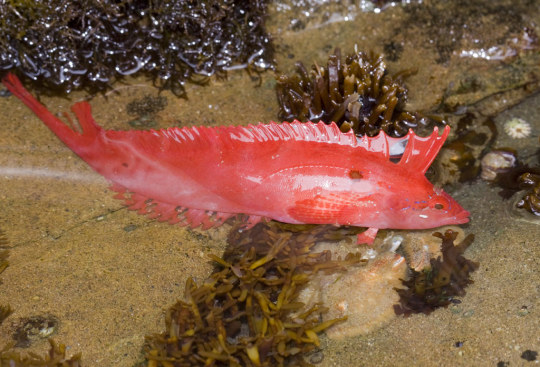
Crevice kelpfish (Gibbonsia montereyensis)
Photo by Marlin Harms
#crevice kelpfish#gibbonsia montereyensis#gibbonsia#clinidae#blenniiformes#ovalentaria#carangimopharia#percomorpha#acanthomorpha#neoteleostei#euteleostei#teleostei#neopterygii#actinopterygii#osteichthyes#vertebrata#chordata
17 notes
·
View notes
Photo

26 of 31 of #MerMay ! Blenny Just a fun bunch of friends blowing bubbles and enjoying life. What more could you ask for? #reversemermaid #blenniiformes #blenny #smallfish #atlantaartist #bubbles #mermay2020 #aquaanthro #littlefish #merfolk #fishfolk #friendship #hangingout (at Atlanta, Georgia) https://www.instagram.com/p/CAqthDZjZiE/?igshid=1y2hn2bw5zbt7
#mermay#reversemermaid#blenniiformes#blenny#smallfish#atlantaartist#bubbles#mermay2020#aquaanthro#littlefish#merfolk#fishfolk#friendship#hangingout
0 notes
Photo

False Mudskipper
Kingdom: Animalia
Phylum: Chordata
Class: Actinopterygii
Order: Blenniiformes
Family: Blenniidae
Genus: Neoalticus
Species: N. pacificus (”Pacific new Alticus [a genus of combtooth blennies]”)
Ancestral species: Alticus arnoldorum (Pacific leaping blenny)
Time period: early Lithocene to late Solocene (65 million years to 140 million years in the future).
Information: a rather long-lived species of blenny, the False Mudskipper gets its name from its superficially mudskipper-like appearance, despite being only distantly-related to it. Found primarily along the shallow coastlines of eastern Thalassia and western Occidensia, this animal feeds primarily on algae, but will also go for small crustaceans and smaller fish. It is especially common around tide pools, and is an essential part of the oceanic ecosystem. Its front fins allow it to essentially walk on land, and it can survive on land for as long as 3 days. At around 6 inches in length, it is fairly large for an amphibious fish. In color, it is a light greenish-yellow with light brown stripes on the head which turn into faint stripes further down on the body.
0 notes
Text

Orange-fin Anemonefish (Amphiprion chrysopterus), family Pomacentridae, order Blenniiformes, Fiji
photograph by Samson So
#anemonefish#clownfish#fich#bony fish#amphiprion#pomacentridae#blenniiformes#ocean#animals#nature#south pacific#fiji
183 notes
·
View notes
Text
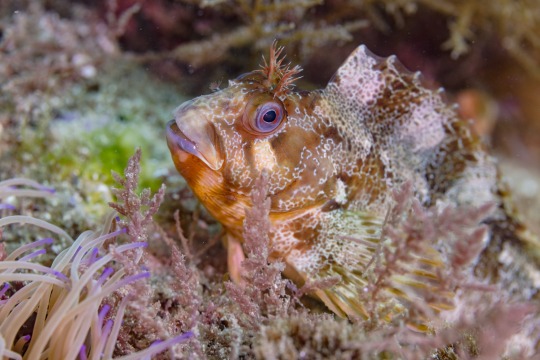
Tompot blenny
“Tompot blenny (Parablennius gattorugine), Arrábida National Park, Portugal. Note: no FP of this species. It can be found in shallow, coastal waters off western Europe, the Mediterranean and North Africa. The tompot blenny is a relatively large blenny that can grow up to 30 centimetres (12 in) in length. There is a single branched tentacle over each of its eyes. It's very territorial and their territories are centred around a crevice in the rocky reef which the fish uses for shelter. They occur in shallow seas at depths of 3–32 metres (9.8–105.0 ft). It has sharp, comb-like teeth which they use to scrape food from the substrate. They feed on sea anemones and on other invertebrates such as prawns and other crustaceans. They are crepuscular, being active mainly at dawn and at dusk.” - via Wikimedia Commons
#picture of the day#picture of the day 01/22/2025#tompot blenny#Parablennius gattorugine#wikipedia#wikipedia pictures#wikimedia commons#nature#animals#fish#Combtooth blenny#marine life#marine biology#marine biodiversity#icthyology#Arrábida National Park#portugal#eukaryota#eukaryotes#fauna#chordata#chordates#Actinopterygii#bony fish#Blenniiformes#blenny#ocean animals#ocean aesthetic#oceancore#fishblr
17 notes
·
View notes
Text
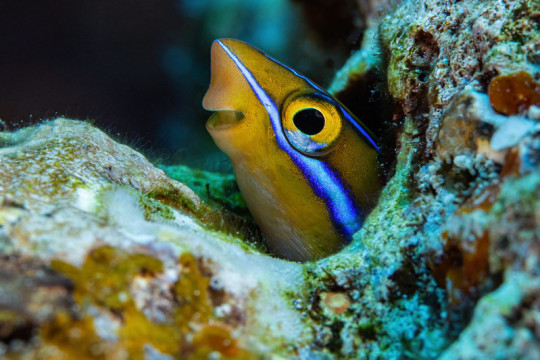
A bluestriped fangblenny (Plagiotremus rhinorhynchos) peeks out of a coral reef in Fiji
by divindk
#bluestriped fangblenny#say that 3 times fast#combtooth blennies#blennies#bony fish#fish#plagiotremus rhinorhynchos#plagiotremus#blenniidae#blenniiformes#actinopterygii#chordata#wildlife: fiji#wildlife: oceania
106 notes
·
View notes
Text
Taxonomy Tournament: Fish
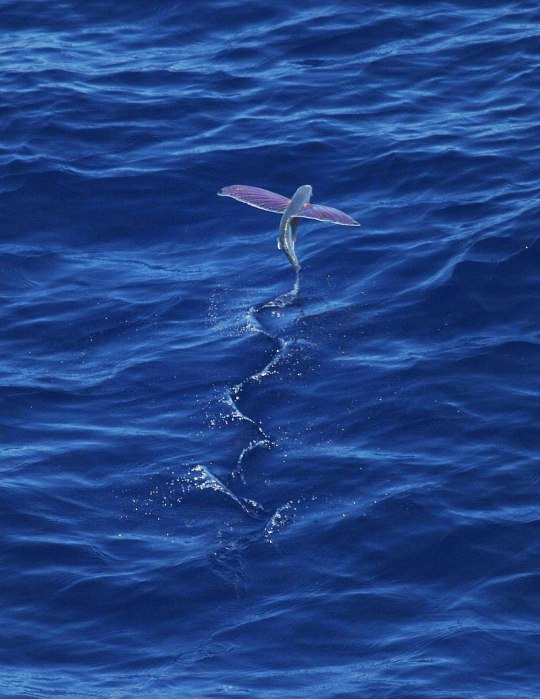
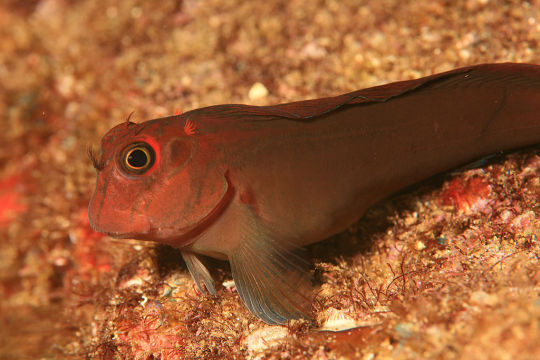
Beloniformes. Most fish of this order live close to the surface, including the flying fish.
Blenniiformes. This order is made up of blennies, including the sand stargazer, which have eyes on top of their heads and spend most of the time buried in sand to ambush prey.
#added clarification in the poll options#as the order names are similar#animals#biology#polls#poll tournament#zoology#flying fish#fish#blennies#Beloniformes#Blenniiformes#0x1cv0x23
44 notes
·
View notes
Text

Venezuelan Blenny
#venezuelan blenny#blenny#Emblemaria diphyodontis#Actinopterygii#Blenniiformes#Chaenopsidae#Emblemaria#upl
5 notes
·
View notes
Text
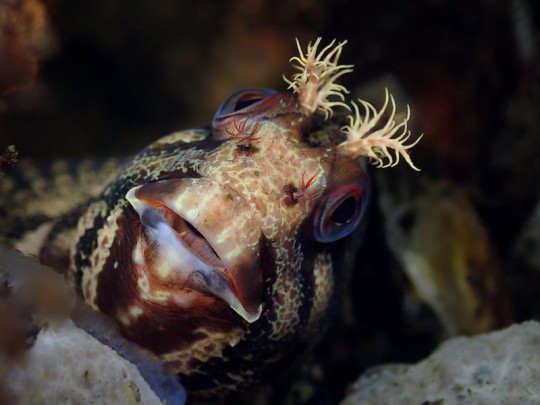
A tompot blenny (Parablennius gattorugine) off the coast of the Netherlands
by Verheyen Stefan
#tompot blenny#blennies#bony fish#fish#parablennius gattorugine#parablennius#blenniidae#blenniiformes#actinopterygii#chordata#wildlife: netherlands
159 notes
·
View notes